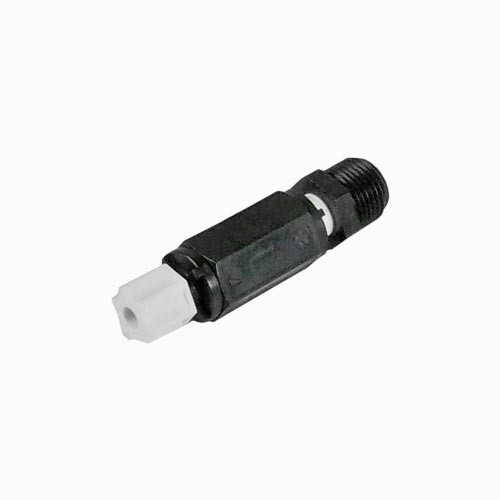I've been running 12.5% bleach in my Stenner for a couple months now. It seems that I get a crystal buildup (salt? calcium?) mainly at the injection point, and it seems to go 1/2-3/4" into the dispensing line, completely blocking flow, and therefore causing the line to pop out of the ferrule at the pump head, flooding the spill area of the tank with bleach.
I called Stenner, and they advised that the only thing I can do to help is to use more dilute bleach, but that would just cause the crystal buildup in the pump tank rather than all in the dispensing line. I suggested going from 1/4" to 3/8" line, cutting an angle of the line at the injection port, using the duckbill check valve even though it's a low-pressure pump, etc., and they said none of those will fix the problem.
I found a product sold in Australia and New Zealand that is supposed to prevent the crystals from forming, but I can't find anyone that sells a similar product in the United States. I looked up the safety data sheet on the Aussie product and found that the active ingredient is < 1% potassium permanganate. I did some quick math and determined I should dose at 0.5 grams per US gallon of 12.5% bleach. I ordered some of the chemical from Amazon and will be trying that tomorrow to see if it helps.
The only other idea I had was to plumb a length of PVC vertically and attach the injection port at the top of that pipe, to create a pressurized air-gap so that the bleach will drop through the air gap in the pipe before hitting the return line to the pool. If the crystals are forming just by reaction to my pool water, should should fix it. I ordered a union, ball valve, clear PVC section, and cap, just in case the potassium permanganate doesn't work. This way I can use the clear PVC on the vertical section to ensure there is an air gap, and I can use the ball valve to stop water pressure from filling the vertical pipe when cleaning/replacing the dispensing line, and I can use the union to drain the water out of the vertical pipe if it fills. But if the crystals are forming from the bleach interacting with the air, this won't fix anything.
Has anyone found that using a more dilute bleach helps prevent the crystals from forming? Or is there any other additive you've found that can help prevent it? I don't care if I have to clear out the crystals, but was hoping for at least 4 weeks between maintenance, instead of 1-2 weeks.
Otherwise it's been great having my FC level automatically dosed 24h and my pool has never been cleaner!
Thanks for any advice you have on the problem!
Update: I added the potassium permanganate last night. It's about 1/4 tsp per 3 gallons. I'll report back in 1-2 weeks when I'm here again and can check the crystal buildup. Hopefully I won't find the line popped off and the top of the tank flooded for once.



